In this BSA series – “AI@Work” – enterprise software leaders explain in their own words how artificial intelligence (AI) is having a positive impact on people’s jobs and the workforce. In this submission, BSA Board Member and Atlassian’s General Counsel Stan Shepard writes about how he is encouraging members of his team to use AI to improve efficiency and how Atlassian products are helping customers free up teams to work on more creative work.
What is your AI@Work?
Our mission at Atlassian is to unleash the potential of every team, so we consider everything with teamwork in mind. We created a suite of AI capabilities and launched Atlassian Rovo in October. Rovo was designed to serve as an AI-powered teammate available across our entire product portfolio, helping humans turn information into action.
Who are some of the people who benefit from AI@Work?
Teams across all industries are already benefiting from AI. The FanDuel Group implemented Jira’s Virtual Service Agent, enabling them to cut support tickets requiring human intervention by 85%, freeing teams to work on more creative and strategic tasks. The technical program management team at Procore also saved 74% of their time creating quarterly roadmaps with Atlassian Rovo. Internally, Atlassians have created over 500 custom AI-powered agents that can help accomplish specific tasks across different functions. Our sales team uses a Customer 360 agent that can quickly pull customer insights onto a page and then spar with the agent to inform their sales strategy.
What internal capabilities do people or companies need to harness the power of AI for their organization?
While most companies aim for responsible AI, many of the leaders I talk to agree that it’s hard to navigate the rules of the road in this evolving regulatory climate. The best thing leaders can do to enable safe innovation is establish clear principles and resources that guide employees in developing new AI tools.
At Atlassian, we created the Responsible Technology Review Template, which reflects our guiding principles for thoughtful technology development. This resource aligns with various industry frameworks and our commitments to customers, employees, and stakeholders.
Over the past year, we’ve integrated these resources into our development workflows, ensuring every AI feature is guided by these principles before release. We also shared our Responsible Tech Review Template publicly to assist teams worldwide in translating principles into practice.
How have you addressed using AI@Work for members of your team?
We encourage it with our team and provide guidance so people can use it safely — especially in legal, where things like contracts can be dense and there is a low tolerance for errors. Using AI, our commercial legal team can present changes to deal terms in a more engaging way for our sales team and customers. For example, they can use AI in Confluence, our knowledge management tool, to summarize any sticking points or challenges in contracts and then instantly convert the page into an easy-to-read presentation. This made it much easier for our sales team and the customer to review changes and move negotiations forward, saving at least 1-2 hours of work per contract.
What are some key takeaways for leaders using or planning to use AI@Work?
Leaders can help their teams embrace new ways of working by sharing their own examples, openly encouraging safe AI experimentation, and providing responsible tech guidelines.
2025 presents an opportunity for teams to approach AI with a different mindset. According to our recent AI Collaboration report, employees who approach AI as a creative partner or collaborator rather than a tool reap greater benefits beyond time savings, such as improved work quality. However, a lack of leadership support and fear of failure are preventing teams from trying new approaches to AI.
 About the author:
About the author:
Stan Shepard is General Counsel at Atlassian where he leads the Legal, Policy and Government Affairs, Foundation and Sustainability teams. Prior to joining Atlassian in 2015, Stan practiced technology transactions at Charles Schwab and Gunderson Dettmer. Stan has deep experience across a broad range of subjects with an emphasis in cloud, SaaS, corporate governance, M&A, data privacy, data governance, strategic alliances, IP licensing and product development. Stan is based in the San Francisco Bay Area and currently serves as a board member of BSA | The Software Alliance.

